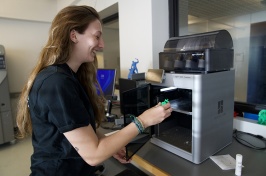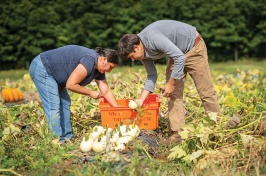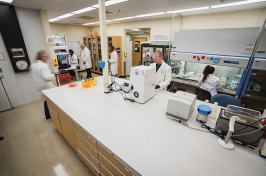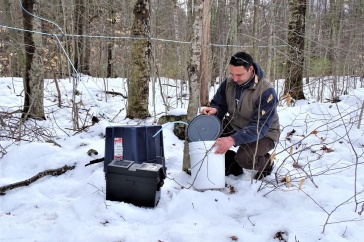Colostrum, the nutrient-rich first milk from cows, plays a critical role in calf health, providing essential antibodies such as immunoglobulin G (IgG) to boost immunity and support early growth. Pete Erickson, a researcher with the New Hampshire Agricultural Experiment Station (NHAES) at the University of New Hampshire, has developed data-driven models to identify key factors affecting colostrum yield and quality—insights that could help dairy farmers improve calf health as well as long-term productivity and health of adult cows.
“Colostrum is essential to setting up calves for success,” said Erickson, a professor in the agriculture, nutrition and food systems department at the UNH College of Life Sciences and Agriculture. “It’s the foundation of their immunity and overall health.”
For New England farmers, managing colostrum quality can be particularly challenging due to the region’s variable weather and shorter growing seasons. Environmental stressors such as temperature fluctuations during a cow’s dry period can significantly impact colostrum production. These challenges make it even more critical for regional dairy producers to adopt effective strategies to improve colostrum quality.
Data-driven models are tools that analyze information from farms, cows and environmental conditions to identify patterns and factors that influence outcomes. In a study led by Erickson, these models highlighted three key factors affecting colostrum yield and quality: timing, environment and nutrition. The models revealed that colostrum quality decreases significantly if it is not harvested within six hours of calving. Delaying the first milking reduces IgG levels, limiting the milk’s ability to deliver the protective benefits calves need.
“Our research shows that the timing of colostrum harvest is one of the most critical factors. Even a few hours’ delay can significantly reduce its quality,” Erickson explained.
Temperature extremes during the dry period—both very hot and very cold—were shown to negatively affect colostrum yield and quality. Environmental stress disrupts the biological processes that cows rely on to produce colostrum rich in nutrients and antibodies.
Additionally, balanced, energy-dense diets for dry cows were also found to improve both colostrum yield and IgG concentration. Proper nutrition in the weeks leading up to calving ensures cows have the energy reserves necessary to produce high-quality colostrum.
The study’s results can guide farmers in making targeted management decisions, such as adjusting milking schedules, improving cow comfort and refining feeding practices. Based on the findings, three actionable strategies that farmers could consider implementing to improve colostrum production and calf health are:
- Harvest Timing: Ensure colostrum is collected within six hours of calving to preserve its IgG levels and overall quality.
- Environmental Management: Protect dry cows from extreme temperatures using appropriate housing, such as well-ventilated barns in summer or insulated shelters during winter, to minimize stress.
- Nutritional Support: Provide dry cows with energy-rich diets during late gestation to ensure they are prepared to produce high-quality colostrum at calving.
“Making small adjustments, like focusing on timing or improving nutrition, can make a big difference in colostrum quality,” Erickson said. “It’s about giving farmers practical, research-backed steps they can implement easily.”
This material is based on work supported by the NH Agricultural Experiment Station through joint funding from the USDA National Institute of Food and Agriculture (under Hatch Multistate award number 1016574) and the state of New Hampshire.




















































